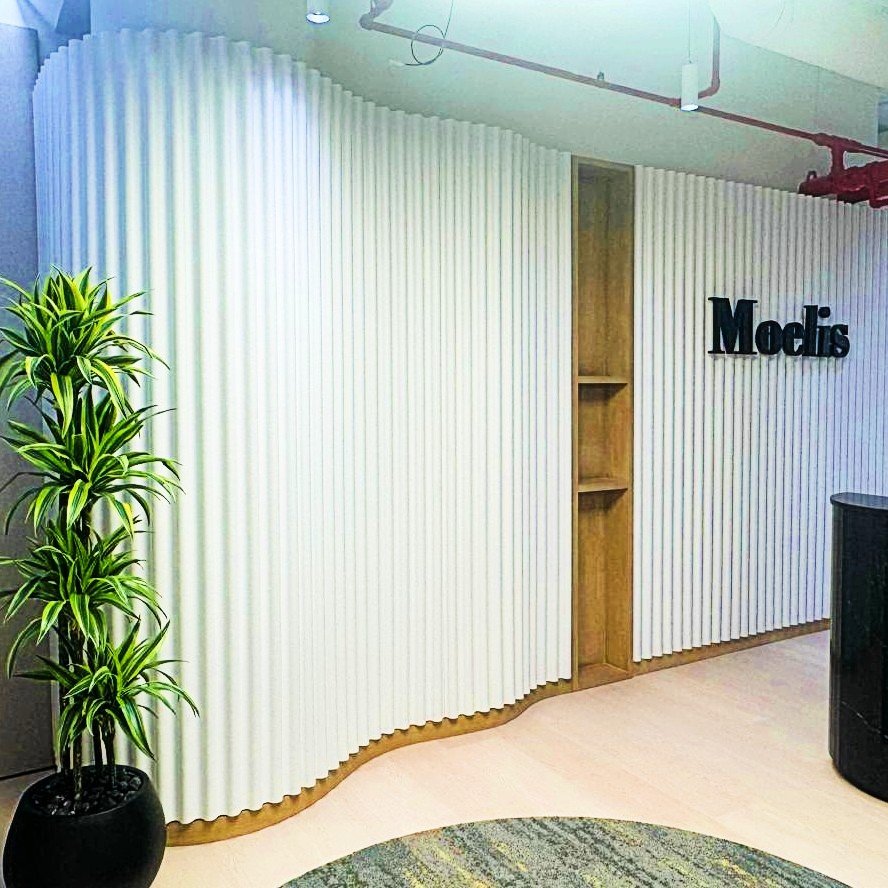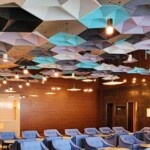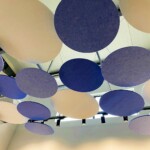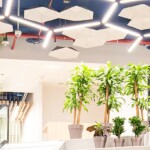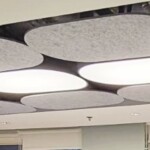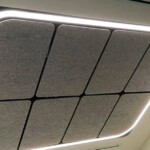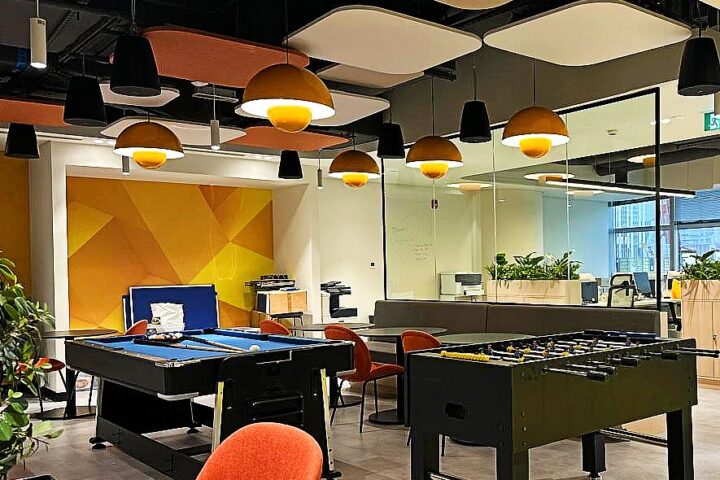Why Choose Polyester Acoustic Panels?
Polyester acoustic panels, also known as PET panels, have become a preferred option in modern interior projects. They offer strong acoustic performance while supporting contemporary design standards. Compared with older materials such as fiberglass, mineral fibre or timber boards, PET panels provide a practical, safe and visually adaptable alternative for many environments.
Key Advantages of PET Acoustic Panels
1. Strong Sound Absorption
The dense fibre structure of PET panels slows sound waves and reduces reflections effectively. This improves clarity in classrooms, offices, meeting rooms and open-plan workspaces. PET panels achieve good NRC ratings and suit most common acoustic requirements.
2. Safer and More Comfortable for Occupants
Traditional fibre materials may shed particles or cause irritation during handling. PET panels have a smooth, bonded surface with no loose fibres. They are low-VOC and suitable for education, healthcare and high-traffic environments where safety is essential.
3. Lightweight and Easy to Install
PET acoustic panels are lighter than timber panels or mineral fibre boards, making them easier to lift and install. They can be fixed using adhesives, screws, nails or suspended as baffles or clouds. Their light weight also reduces load on ceilings and walls.
4. Greater Design Flexibility
Decrasound PET panels are available in 96 colours, two thicknesses and a wide selection of shapes. They can be used as feature walls, acoustic art, pinboards, baffles, clouds or ceiling tiles. This flexibility allows acoustic treatment without compromising architectural intent.
5. Durable and Low-Maintenance
PET panels do not warp, crack or crumble. They resist moisture and general wear, making them suitable for gyms, community halls and high-use spaces. Cleaning is straightforward and requires minimal maintenance over the panel’s life.
6. Environmentally Responsible
Polyester acoustic panels contain recycled fibres and can be recycled again at end-of-life. Their manufacturing process uses less energy compared with many traditional acoustic materials. Choosing PET supports sustainable construction practices.
Where PET Panels Outperform Traditional Options
- In classrooms: safer, colourful and dual-purpose as pinboards.
- In open offices: lightweight baffles and partitions that add visual rhythm.
- In hospitality: decorative wall features with genuine acoustic function.
- In commercial fitouts: simple installation and long-term durability.
Traditional materials still have their place, especially where structural elements are required, but PET panels offer a balanced solution combining performance, practicality and aesthetics.
A Smart Choice for Modern Interiors
For designers, builders and property owners seeking a safe, efficient and visually adaptable acoustic solution, PET polyester panels deliver dependable performance. Decrasound supports projects with custom colours, shapes and sizes to meet a wide range of acoustic and design requirements.
Contact us to discuss your project or request samples.
Frequently Asked Questions about PET Acoustic Panels
Why choose polyester acoustic panels over traditional materials?
Polyester acoustic panels provide strong sound absorption, are safer to handle, and offer greater design flexibility compared with many traditional materials.
Are PET acoustic panels safe for schools and offices?
Yes. PET panels are low-VOC, non-irritant and have a bonded surface with no loose fibres, making them suitable for classrooms, offices and public spaces.
Do polyester acoustic panels perform as well as other acoustic materials?
When correctly specified, PET panels deliver excellent sound absorption for most commercial, education and workplace environments.
Can PET acoustic panels be used as decorative features?
Yes. PET panels are available in a wide range of colours and shapes, so they can be used as feature walls, clouds, baffles or pinboards with acoustic function.
Are polyester acoustic panels an environmentally responsible choice?
Polyester acoustic panels contain recycled fibres, are long-lasting and can be recycled at end-of-life, supporting sustainable building practice.

